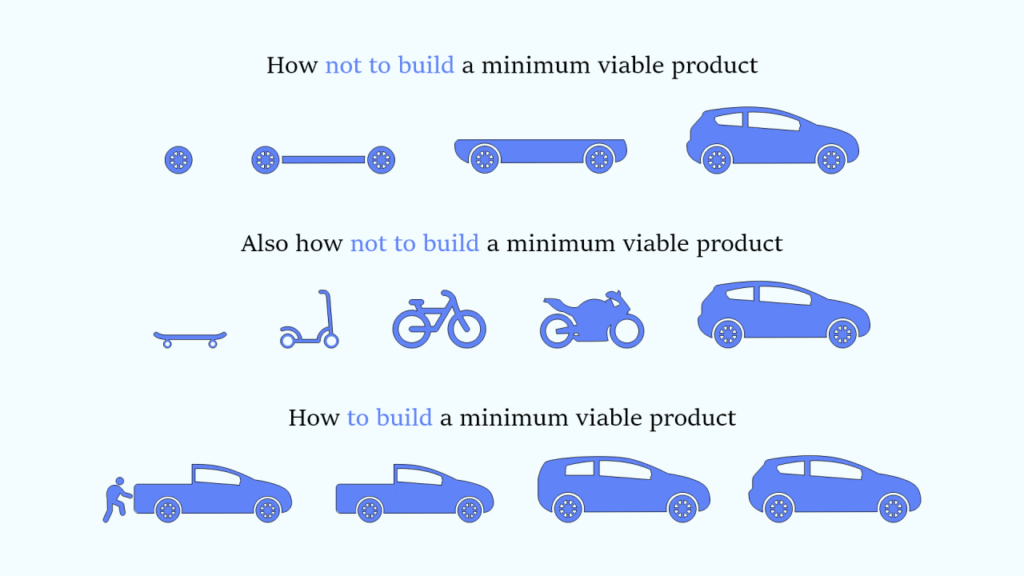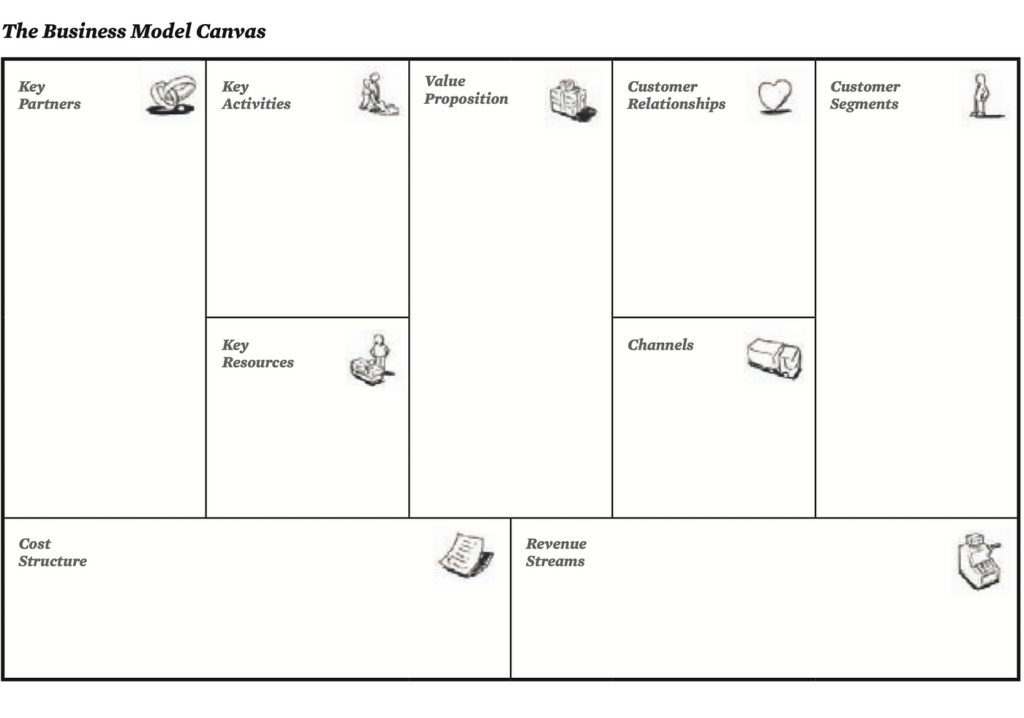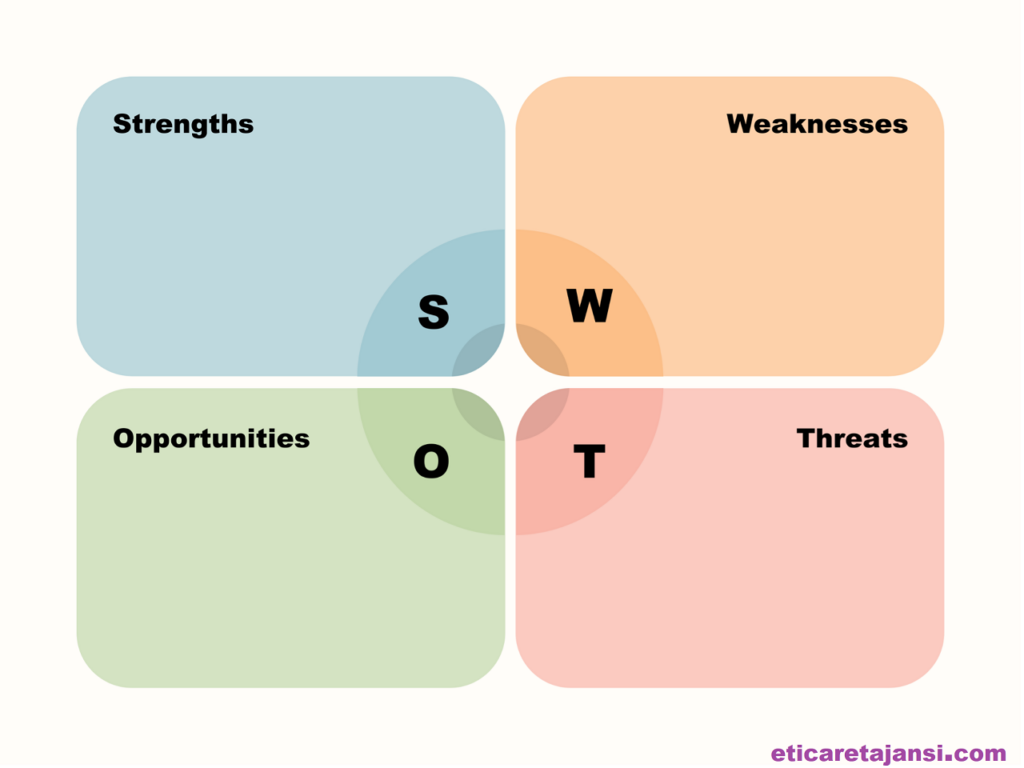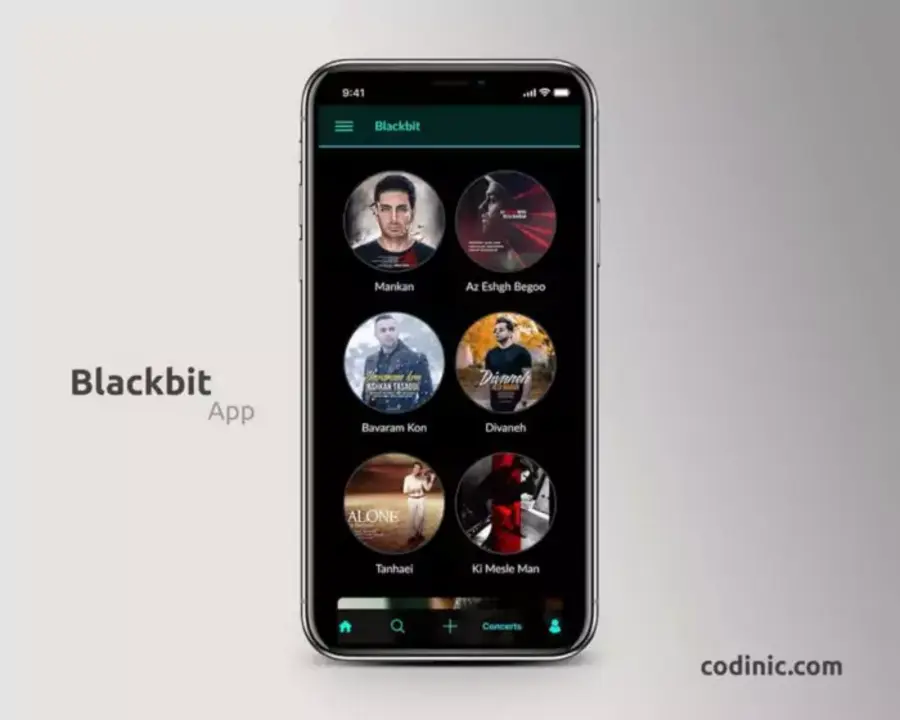Use of Venture Strategy Tools
While creating a Venture Strategy, you can take proactive measures early on by utilizing tools like the Canvas Plan, SWOT Analysis, and MVP. This approach ensures that the details of your business are not overlooked, allowing for a more comprehensive and effective strategy development process.
MVP (Minimum Viable Product)
MVP refers to the simplest version of a product that can be launched, containing only the essential features. Its primary goal is to test how the product will be received by the target audience.
Objectives:
Collecting customer feedback: This allows you to gather insights directly from users to understand their needs and preferences.
Testing the product’s core value proposition: It helps you assess if the basic concept of the product is appealing and useful to the audience.
Understanding market response: By minimizing cost and effort, you can determine whether the product resonates with the market.
Example: For a recipe app, the MVP could consist solely of a list of recipes and basic search features. More advanced features, such as personalized recipe suggestions, can be introduced in later versions based on user feedback.

Canvas Plan (Business Model Canvas)
A canvas plan is a template designed to visualize and analyze a business model. It enables you to describe the model in a simple and effective way by breaking it down into 9 key components:
Components:
Key Partnerships: Who are the collaborators or partners you work with to succeed in your business?
Core Activities: What essential actions or tasks must be carried out to achieve your business goals?
Essential Resources: What critical resources (financial, human, technological) are necessary to operate your business effectively?
Value Proposition: What problem are you solving for your customers? What unique value are you providing?
Customer Relationship: How do you establish and maintain a relationship with your customers?
Channels: Through which platforms or methods do you deliver your product or service to your customers?
Customer Segments: Who is your target audience or customer base?
Cost Structure: What are the primary costs involved in running your business?
Revenue Streams: How does your business generate income? What are your different revenue models?
This framework helps entrepreneurs develop a clear, organized approach to business planning and strategy.

Using the Canvas Model
This tool is used to quickly and clearly analyze the strengths and weaknesses of a business model. By designing a new business model through Canvas, clear decisions about a startup’s strategy can be made. By answering a series of questions per category as above, a clear value proposition emerges. It is also simple to improve an existing business model through the Canvas method. By looking at what developments are happening per category, the company can refine the value proposition and structurally improve the strategy. Tip, print the model on a large sheet of paper and keep filling in each surface according to the brainstorming session.
SWOT Analysis for Venture Strategy
SWOT analysis is a framework that analyzes the strengths, weaknesses, opportunities and threats of a business or project. Among the main purposes of SWOT analysis; strategic planning, identifying risks and opportunities, making business decisions in a more informed way.
SWOT consists of four main parts:
- Strengths: What are your advantages? What are your competitive advantages?
- Weaknesses: What are your areas for improvement or disadvantages?
- Opportunities: What are market trends, customer needs or other opportunities?
- Threats: What are the external risks or threats you may face?

How These Tools Relate to Each Other
These tools will help you to visually summarize your situation and make clearer decisions when creating a Venture Strategy and developing your business. Summarize;
MVP: Allows you to test the product quickly.
Canvas Plan: Visualizes and organizes your business model.
SWOT Analysis: Helps you analyze the situation while making strategic decisions.
The reports that will emerge from the relationship between these tools can clarify the points you need to focus on in your business.
Business Model Canvas and MVP:
The Business Model Canvas allows you to analyze and define your venture strategies and ideas in a systematic way. In particular, the following sections of this canvas guide the creation of the MVP:
- Value Proposition: Defines the key features of the MVP. This is where you decide which problem you will solve for the customer.
- Customer Segments: Allows you to choose which target audience the MVP will focus on.
- Channels: Clarifies how you will deliver the MVP to customers.
SWOT Analysis and Business Model Canvas
A SWOT Analysis assesses your current situation and reveals the strengths, areas for improvement, opportunities and threats of your business idea or company.
This data from SWOT is used when creating the Business Model Canvas. For example:
- Strengths Contributes: to the Value Proposition or Key Resources section.
- Weaknesses: Requires you to focus on Cost Structure or Core Activities.
- Opportunities: Indicates growth areas such as Customer Segments or Channels.
MVP, SWOT and Business Model Canvas
Customer feedback from the implementation of the MVP allows to update the SWOT analysis and revise the Business Model Canvas.
- For example, weaknesses can be identified in an area where the MVP failed, and this will help you make adjustments to your business model.
How should we use this information together?
1: Conduct Due Diligence with SWOT Analysis
- Analyze the dynamics of the market and your internal structure with SWOT:
- Which strengths should you focus on?
- Which weaknesses should you improve?
- Which opportunities should you seize?
- Which threats should you be prepared for?
This analysis gives you a framework on which customer problem you should focus on solving.
2: Define Your Strategy with the Business Model Canvas
- Prepare a Business Model Canvas using the data from the SWOT Analysis . For example:
- Strengths → Decide which resources or activities to emphasize.
- Opportunities → Indicates where there is room for growth in the market.
- After filling in all sections of the Business Model Canvas, identify the most critical and essential elements of this model. These elements will define the key features of the MVP.
3: Rapidly Develop and Test the MVP
- Develop an MVP basedon the value proposition and customer segmentsyou defined in the Business Model Canvas .
- Purpose: To launch the MVP to get feedback from your target audience and test the validity of your business model.
- The MVP should offer solutions to key problems and focus on actually solving the customer’s problem.
- It should be developed in a cost-effective way.
4: Revise with Feedback
- Based on MVP’s performance:
- Update your SWOT Analysis. New strengths/weaknesses, opportunities and threats can be identified with data from the MVP.
- Revise your Business Model Canvas. Evaluate which channels are more effective, where revenue streams come from or where costs need to be reduced.
5: Expand the Market by Improving the MVP
- If the MVP was successful, use the feedback to transform your product into a more advanced version.
- Evaluate the new state of the product by conducting a new SWOT analysis.
- Develop growth strategies by keeping the Business Model Canvas constantly updated.
Example: A Food Delivery App
- SWOT Analysis:
- Strengths: Fast delivery network.
- Weaknesses: Limited customer segment.
- Opportunities: Increasing trend of online food ordering.
- Threats: Competition from big players.
- Business Model Canvas:
- Value Proposition: Fastest and hottest delivery.
- Customer Segments: Busy working professionals.
- Channels: Mobile app.
- MVP:
- A simple app that lists only the most popular dishes.
- Goal: To test the fast ordering experience.
- Results.:
- If the MVP has met the speed expectation of the customers, the application can be extended with new features.
- SWOT and Business Model Canvas are updated according to this feedback.
- SWOT Analysis:
To summarize;
MVP, Business Model Canvas and SWOT Analysis are powerful complementary tools.
- SWOT helps to understand the current situation.
- The Business Model Canvas provides a strategic framework.
- The MVP is a tool to test this strategy in the real world.
By continuously repeating this cycle, you can optimize and successfully grow your business model. You can follow our article on transitioning from MVP to a comprehensive product here.



Pingback: Mobile Application Development - Codinic